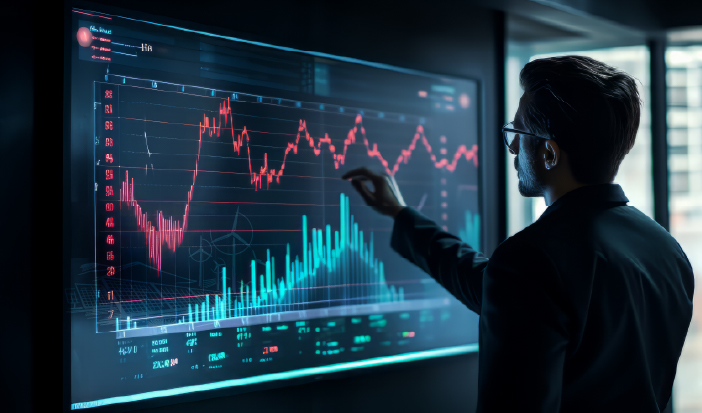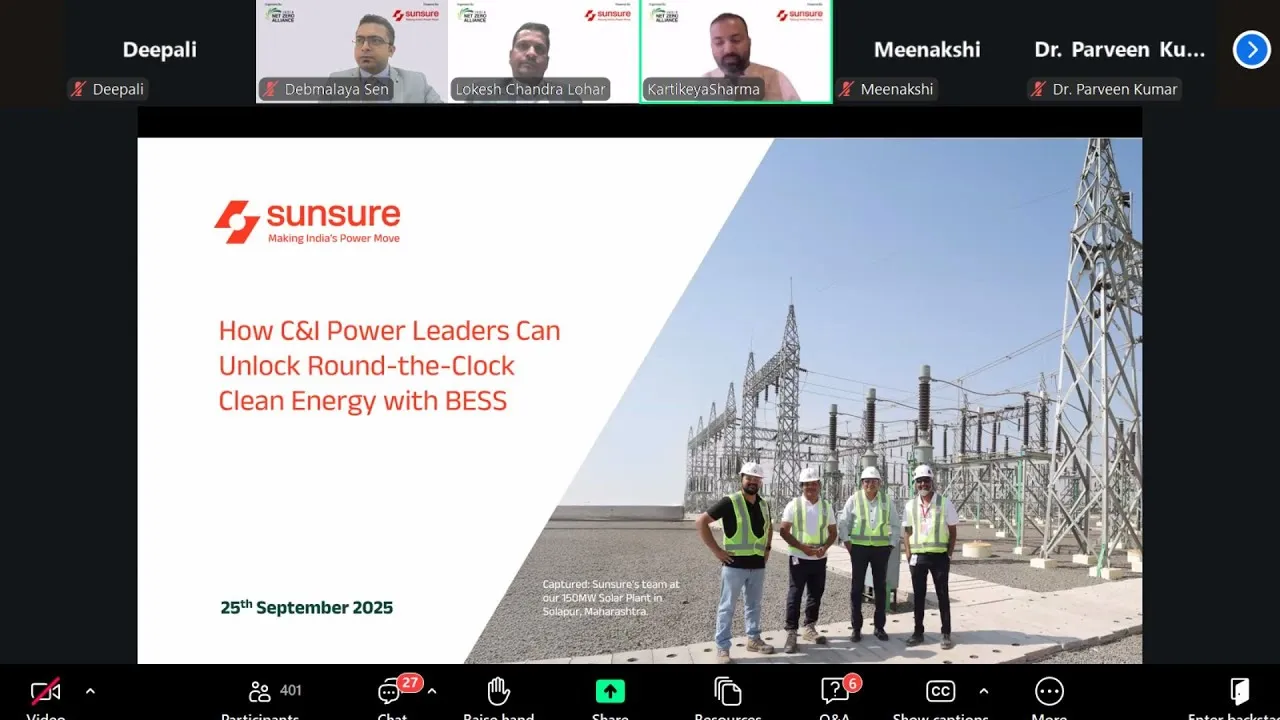Table of content
- Understanding Energy Trading
- Energy Trading in the Indian Context
- Innovations & Future Trends of Energy Trading in India
- Sunsure Energy’s Role in the Market
- Final Thoughts


India’s renewable energy industry is rapidly transforming, with solar projected to meet nearly half of the global electricity demand growth by 2025’s end.
The Indian Energy Exchange (IEX), the country’s premier electricity trading platform, reported a 26% year-on-year surge in traded volumes in April 2025.
It reached 10,584 million units, while the green market’s traded volume nearly doubled to 782 million units.
India’s energy trading landscape is evolving to ensure efficient, transparent, and sustainable power distribution. Let’s understand more about what power trading is in the renewable energy of India.
Energy trading refers to the commercial buying and selling of electricity and related commodities. This primarily works through power exchanges, bilateral agreements, and open access markets.
Energy trading exchanges such as the Indian Energy Exchange (IEX) and Power Exchange India Limited (PXIL) enable over 6,600 participants from across 29 states and 5 Union Territories to trade electricity in real-time.
They also facilitate Renewable Energy Certificates (RECs) and Energy Saving Certificates to support green goals efficiently.
This ecosystem ensures a transparent, competitive, and efficient energy supply for businesses and industries.
Power trading plays a vital role in ensuring a reliable, efficient, and sustainable energy system. Here is why it is important:
For businesses and industries, power trading offers a cost-effective way to manage energy needs with high reliability.
For policymakers, it is a strategic tool to promote sustainable energy access and a greener grid.
Here is a breakdown of two major types of energy markets:
Spot markets facilitate short-term electricity trading, typically for same-day or next-day delivery. Prices in these markets are highly dynamic, responding in real time to fluctuations in demand and supply.
Key platforms include:
These include structured mechanisms like Power Purchase Agreements (PPAs) and forward or futures contracts.
In such markets, the price, volume, and delivery timelines are agreed upon in advance, offering more certainty and stability for both generators and consumers.
The energy trading ecosystem has these key market participants:
Energy trading in India involves regulated buying and selling of electricity via power exchanges (like IEX and PXIL), bilateral contracts, and open access markets, overseen by the Central Electricity Regulatory Commission.
India’s electricity market is structured around two broad categories:
The two main power exchanges in India that facilitate energy trading are the following:
India faces significant challenges which can cause instability in market growth. Here is a detailed breakdown of the hurdles:
These are some of the unique opportunities of energy trading in India:
To know more about Renewable Energy Certificates, you can read our detailed blog.
As renewable energy integration evolves, India’s power market is entering a phase of structural transformation. Here are some key trends to keep an eye on:
1. Blockchain Technologies
Blockchain technology will unite all the stakeholders under one decentralised network. It enables peer-to-peer (P2P) trading, especially useful for prosumers and decentralised grids.
2. Renewable Energy Expansion
Sources like solar and wind are becoming increasingly prevalent, changing traditional trading models and driving the need for new strategies to incorporate decentralised energy.
3. Energy as a Service (EaaS)
Energy as a Service model is emerging, where energy companies offer energy solutions as a service, including RECs, energy storage, and smart energy management.
4. Distributed Energy Resources (DERs)
DERs, such as microgrids and distributed generation, are changing the way energy is produced and traded, requiring companies to adapt their trading strategies.
Sunsure Energy, as a leading renewable energy company in India’s renewable energy industry, plays a significant role in the trading market. We provide:
Under this, we offer:
Check out Sunsure Energy’s Projects
Under this category, we provide the following services:
Energy trading is the fuel of India’s renewable future. As the sector scales, trading platforms, instruments, and strategies will shape how efficiently and reliably power flows from clean sources to the end users.
As markets move towards decentralisation, digitalisation, and decarbonisation, the trading environment will be at the forefront of promoting India’s green energy goals.
Yes, under Green Open Access Rules, 2022. Even entities with lower consumption thresholds can participate through aggregators or by accessing power through open-access models.
PPAs are long-term contracts with fixed pricing. It allows real-time or short-term procurement based on market conditions, offering more flexibility.
Yes, through forward contracts, options, and other financial instruments, participants can hedge against volatility and secure cost predictability.
It requires major skills, including demand forecasting, regulatory knowledge, market analytics, and contract negotiation. Also, digital tools and AI are central to trading strategies.
Absolutely. It supports optimal integration of renewables, efficient balancing, and carbon monetisation. All these are critical for a net-zero roadmap.


